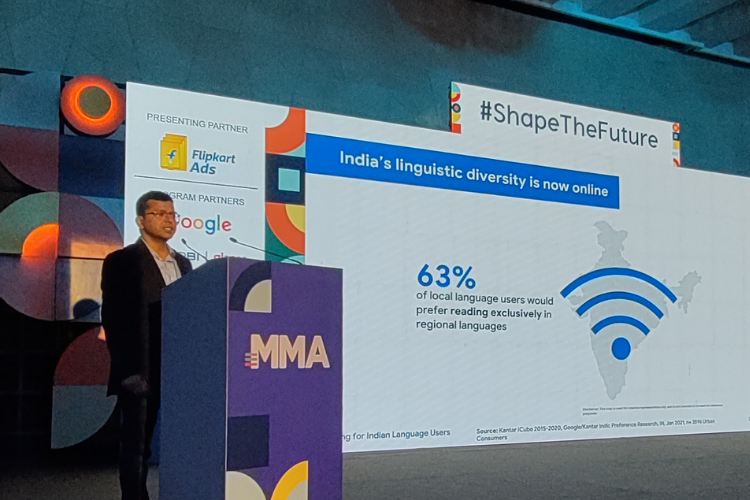Day one of MMA Impact 2022 saw Pratyush Sinha, mobile transformation lead, Google India, deliver a keynote on the five principles to build e-commerce apps and sites in Indian languages.
Starting off his session, Sinha shared, "More than 63% of users prefer content in their regional languages. With 50% of India’s internet users coming online in the last five years, we are witnessing India’s linguistic diversity manifesting itself in the online world. But most of these users feel frustrated when they use the internet because most of the experiences were in English only. This is not familiar to the users and makes them feel left out."
He said that when a product is shown to a consumer in a relevant language, they are more confident in reaching the last mile in their purchase journey. Sinha owed this purchase intent to local language product reviews, adding local flavour to complex jargon, and colloquial translations.
Sinha detailed five principles to help build e-commerce sites and apps in Indian languages by analysing the pain points of local language consumers:
Use conversational language
When translating, conversational languages needs to be employed. Local languages need to be used to explain the terms, and the best way to do that is through colloquial translations. Avoid mixed scripts as it breaks the nitty-gritty of the sites. Using text that is half in English and half in local won't work, as it breaks the credibility of the site.
Build digital confidence
An array of users come online for the first time and find complexities while using certain features. Throughout the purchase journey, confidence needs to be built, so that they move ahead and don’t opt out of the site. The user's experience needs to be at the core. A visual tip or animation about the product needs to be created, for them to go ahead and complete the purchase.
Make key information easily discoverable
As the user cohorts are new to the internet, they come online to garner information on the product they intend to purchase. Thus, easy access to information needs to be provided. If a brand provides the right information, the element of trust is built and this leads them to be comfortable with the site they are navigating.
Be visual-forward
Visuals work better than text. Brands shouldn’t be thinking of abstract icons as they are harder to interpret. These abstract icons are seen when the product category is viewed, and not all users will understand what they mean. If the replica of the products available in the category is used, it leaves no ambiguity, and users will understand what the images entail.
Prioritise voice
Adopt in-app voice features and build technologies to support them. This makes engagement accessible. Furthermore, capturing user input is essential. Easy alternatives like scanning features need to be provided by brands where consumer geolocation could be determined.




